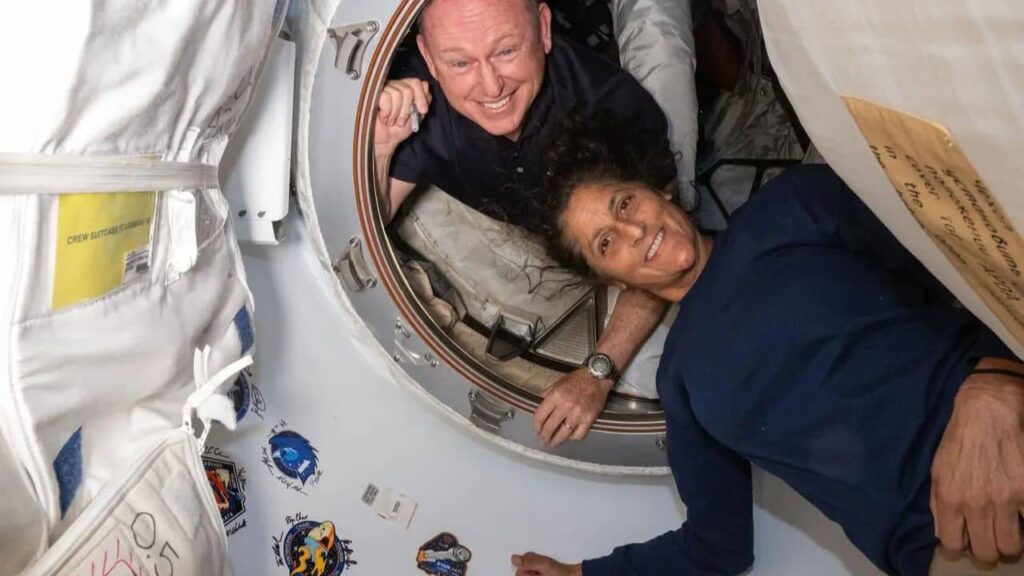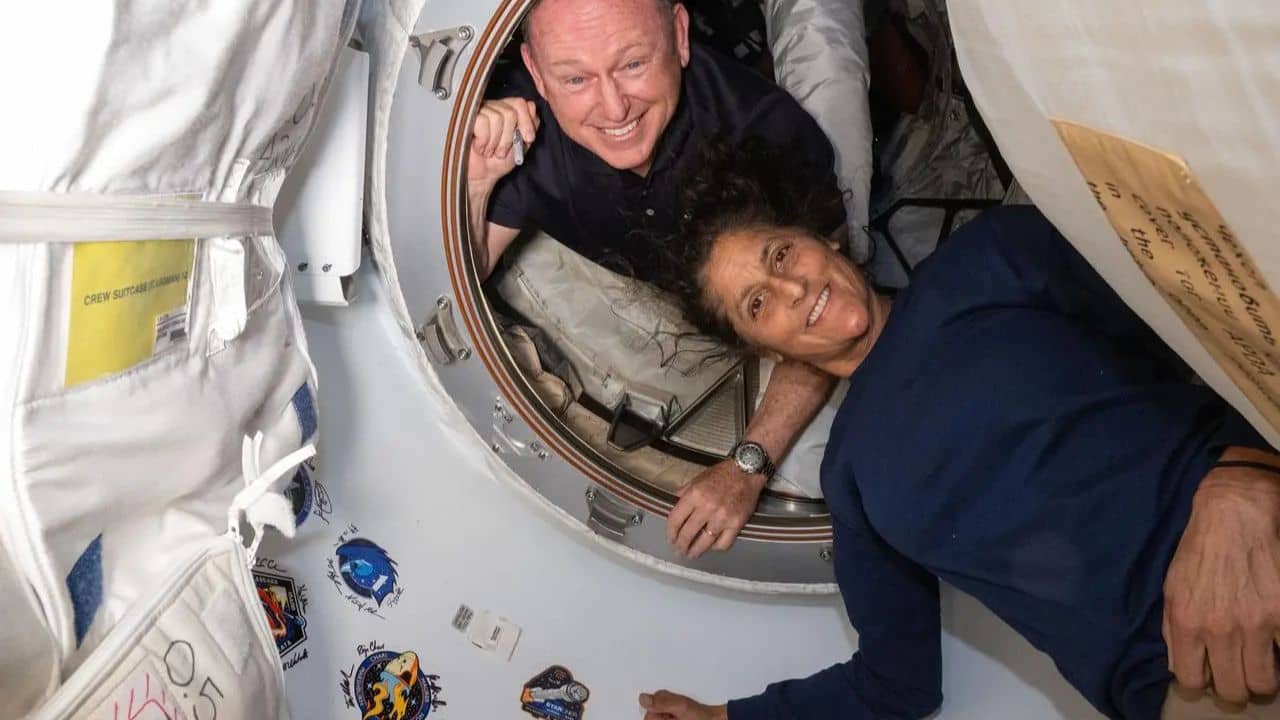NASA Starliner uncrewed return, Boeing Starliner safety, NASA spaceflight safety, ISS mission updates, Starliner spacecraft testing, Commercial Crew Program, NASA astronaut safety, Starliner re-entry, space exploration
NASA decides to bring the Boeing Starliner spacecraft back to Earth uncrewed, prioritizing astronaut safety. Explore the detailed reasons behind this decision and the implications for future space missions and the Commercial Crew Program.

NASA Decides to Return Starliner Spacecraft Without Crew: A Strategic Move for Astronaut Safety
NASA has announced a crucial decision to return Boeing’s Starliner spacecraft to Earth without the scheduled astronauts Butch Wilmore and Suni Williams. This uncrewed return, while unexpected, is a clear reflection of NASA’s dedication to the safety of its astronauts, which remains the agency’s top priority. This decision is not just a precautionary measure; it is a strategic step to ensure that every aspect of the spacecraft is thoroughly tested and validated before it is deemed safe for human transportation.
The Context Behind the Decision
Boeing’s Starliner spacecraft is a key element of NASA’s Commercial Crew Program, designed to transport astronauts to and from the International Space Station (ISS). Wilmore and Williams, the two astronauts originally slated to return aboard the Starliner, had been engaged in a range of critical activities aboard the ISS since their arrival in June 2024. Their mission included supporting station research, conducting maintenance tasks, and performing detailed tests on the Starliner system itself.
However, the mission encountered significant technical issues as Starliner approached the ISS on June 6, 2024. Engineering teams identified helium leaks and problems with the spacecraft’s reaction control thrusters. These issues were not trivial; they raised serious concerns about the spacecraft’s readiness for a crewed return. In response, NASA and Boeing teams conducted extensive reviews, including flight and ground tests, and hosted independent reviews with propulsion experts to determine the best course of action.
Despite these efforts, the uncertainty surrounding the spacecraft’s performance and the lack of expert consensus led NASA to reconsider its original plan. The agency decided that the safest option would be to return the Starliner uncrewed, allowing for further testing and data collection without exposing astronauts to unnecessary risks.
The Importance of Safety in Space Missions
NASA Administrator Bill Nelson emphasized the inherent risks associated with spaceflight, particularly in test flights. “Spaceflight is risky, even at its safest and most routine. A test flight, by nature, is neither safe nor routine. The decision to keep Butch and Suni aboard the International Space Station and bring Boeing’s Starliner home uncrewed is the result of our commitment to safety: our core value and our North Star,” Nelson stated. This decision aligns with NASA’s long-standing commitment to astronaut safety and reflects the agency’s cautious approach to space exploration.
The uncrewed return of Starliner will allow NASA and Boeing to gather valuable data on the spacecraft’s performance during re-entry and landing. This data is critical for identifying and addressing any issues that could affect future crewed missions. By opting for an uncrewed return, NASA is prioritizing the collection of this data without putting human lives at risk.
The Role of the International Space Station
The ISS has been a cornerstone of human space exploration for over two decades. It serves as a platform for advancing scientific knowledge, testing new technologies, and making breakthroughs that are not possible on Earth. The work conducted on the ISS is essential for preparing NASA for the challenges of long-duration spaceflight, including future missions to the Moon and Mars.
Wilmore and Williams will continue their work on the ISS as part of the Expedition 71/72 crew until February 2025. Their mission will now include gathering additional data on Starliner during its uncrewed return. This extended mission will also allow them to continue supporting other research and maintenance activities aboard the ISS, contributing to the station’s ongoing role as a critical testbed for space exploration.
The Technical Challenges and NASA’s Response
The technical issues that led to the decision to return Starliner uncrewed are not uncommon in the world of space exploration. Spacecraft systems are incredibly complex, and even minor issues can have significant implications for the safety and success of a mission. In this case, the identified helium leaks and reaction control thruster issues posed enough of a risk to warrant a change in plans.
NASA and Boeing have worked tirelessly to address these challenges. Engineering teams have conducted a thorough review of the spacecraft’s systems, analyzed extensive data, and developed contingency plans for the return. Despite these efforts, the decision was made to prioritize safety and return the spacecraft without its crew.
Steve Stich, manager of NASA’s Commercial Crew Program, highlighted the importance of the uncrewed return for future missions. “Starliner is a very capable spacecraft, and this flight test is providing critical information on Starliner’s performance in space. Our efforts will help prepare for the uncrewed return and will greatly benefit future corrective actions for the spacecraft,” Stich said. The data collected during the uncrewed return will be invaluable for ensuring that Starliner meets all safety and performance requirements for human spaceflight.
The Future of Starliner and NASA’s Commercial Crew Program
NASA’s Commercial Crew Program is designed to provide safe, reliable, and cost-effective transportation to and from the ISS. The program relies on partnerships with American aerospace companies, including Boeing and SpaceX, to achieve this goal. As part of the program, spacecraft must undergo a crewed test flight to prove their readiness for regular missions.
While the uncrewed return of Starliner may delay its certification for regular crewed missions, it is a necessary step in ensuring that the spacecraft meets NASA’s rigorous safety standards. Following the return, NASA will conduct a comprehensive review of all mission-related data to determine what additional actions are required to certify Starliner for future crewed flights.
In the meantime, NASA’s SpaceX Crew-9 mission, originally planned to include four crew members, will now accommodate the additional needs of Wilmore and Williams. The Crew-9 mission is scheduled to launch no earlier than September 24, 2024, and will be the ninth rotational mission to the ISS under the Commercial Crew Program.
NASA and SpaceX are currently working on several preparations for the Crew-9 mission, including reconfiguring the seats on the Dragon spacecraft and adjusting the manifest to carry additional cargo, personal effects, and Dragon-specific spacesuits for Wilmore and Williams. The launch will take place from Space Launch Complex-40 at Cape Canaveral Space Force Station in Florida, providing increased operational flexibility.
The Broader Implications for Space Exploration
The uncrewed return of Starliner is a reminder of the challenges and complexities of space exploration. It underscores the importance of rigorous testing, data analysis, and risk management in developing safe and reliable spacecraft. NASA’s decision to prioritize astronaut safety over schedule reflects the agency’s commitment to the long-term success of human space exploration.
As NASA and Boeing continue to work together to refine Starliner’s systems and prepare for future missions, the lessons learned from this mission will contribute to the overall success of the Commercial Crew Program. The program’s goal of providing safe, reliable, and cost-effective transportation to and from the ISS remains unchanged, and the uncrewed return of Starliner is a crucial step in achieving that goal.
The ISS will continue to play a vital role in advancing scientific knowledge and preparing for future missions to the Moon and Mars. NASA’s Artemis campaign is already underway, with the agency preparing for future human exploration of the Moon as a stepping stone to Mars. The work conducted on the ISS, including the data collected during Starliner’s uncrewed return, will be essential for overcoming the challenges of long-duration spaceflight and expanding commercial opportunities in low Earth orbit.
Conclusion
NASA’s decision to return the Boeing Starliner spacecraft to Earth without its crew is a testament to the agency’s commitment to safety and the rigorous standards required for human spaceflight. While the uncrewed return may delay Starliner’s certification for regular crewed missions, it is a necessary step in ensuring the spacecraft’s readiness and reliability. The data gathered during the uncrewed return will be invaluable in addressing the technical issues encountered during the mission and improving the spacecraft for future flights.
As NASA and Boeing continue to work together to refine Starliner’s systems and prepare for future missions, the lessons learned from this mission will contribute to the overall success of the Commercial Crew Program. The program’s goal of providing safe, reliable, and cost-effective transportation to and from the ISS remains unchanged, and the uncrewed return of Starliner is a crucial step in achieving that goal.
Read More
- Tragic Knife Attack at Solingen Festival A Somber Anniversary Celebration Turns Deadly
- US Appeals Court Overturns Biden Administration’s Tipped Wages Rule Impacts and Implications
- US Jobless Claims Increase as Labor Market Shows Signs of Cooling
- Rotten Eggs Chemical Detected on Jupiter-Like Alien Planet
